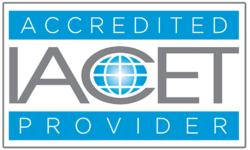Imagine that the Institute for Excellence in Education developed the formula for a potion that would provide all students with motivation. That would be a highly marketable commodity, right? Well, as the saying goes, there’s good news and bad news. The bad news is there does not appear to be a magic potion for motivation. The good news, however, is what Barbara Gross Davis states in her book, Tools for Teaching, “Research has shown that good everyday teaching practices can do more to counter student apathy than special efforts to attack motivation directly.”
So what is it that the most effective teachers do to motivate their students? Below are several ways that educators instill both intrinsic and extrinsic motivation in students:
• Real-life Connections
These include the use of popular technology (iPods, cell phones, YouTube videos) and using the students’ outside interests and culture to make learning come alive for them. A huge part of this strategy is getting to know your students, finding out about their unique interests, and leveraging that information to help increase learning.
• Giving Students Options
Providing students with both choice and voice is essential in building motivation. Whether students are choosing how they will demonstrate learning (product) or the method they will use to learn concepts (process), choice helps heighten their interest. Collaborative groups, peer editing/reviews, and student-developed rubrics are all ways that master teachers give their students voice.
• Strike a Balance
As is true for adults, students tend to be most focused on learning when the task is slightly above their current ability level. Tasks that are too easy tend to bore kids, while ones which seem unattainable make them lose efficacy and give up. Striking a balance means differentiation and frequent progress monitoring so that the teacher can design tasks that challenge, not overwhelm.
• Role Models
Many educators are currently teaching the class they loved in school because of the relationship they had with a particular teacher. We know that particularly in urban environments, students will come to high school classes for the teacher who has created a caring classroom, even if they miss all their other classes. Carolyn McKanders reminds us “always err on the side of relationship” because both things (content and learning) and energy (relationships) matter.
• Meaningful Feedback
If our goal as educators is to create self-directed students, the feedback we provide to them is critical. Commenting “Good job,” circling all the errors, or even providing a letter grade, do little to motivate students or help them to be involved in the learning process. When teachers give students specific data, such as “You have a topic sentence, followed by three supporting details” it helps students to grow intellectually. Posing mediative questions also helps students become self-directed. An example of a mediative question is, “What might be some of the reasons why you chose to begin your narrative with a question?”
So the next time you find yourself wishing that you could motivate your students to learn . . . think again about consciously using the strategies that are a part of great teaching.
Learn more about strategies to motivate students by contacting the Institute for Excellence in Education at www.excellenceined.org, or contact Sherry Lambertson, Executive Director, to discuss professional learning and coaching opportunities for your school or district.
Phone: 989-529-4397 Email: slambertson@excellenceined.org

